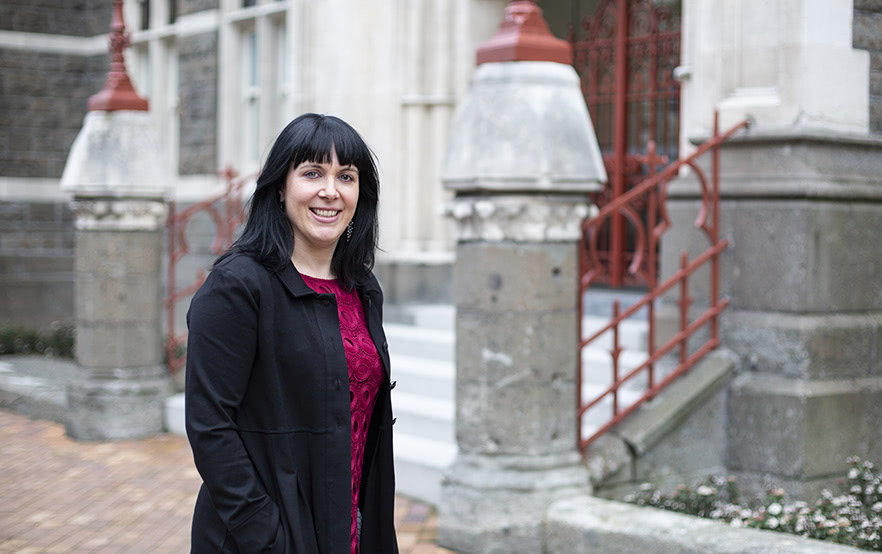Courting history

Dr Jane Adams: “While these older-style courthouses may be admired and valued within their local communities … their intimidating interiors have not always served the best interests of court users.”
“Save our courthouse” has been a common cry in cities and towns throughout New Zealand, but a University of Otago researcher has questioned the wisdom of preserving these historic buildings as working courthouses.
A postdoctoral fellow in the Legal Issues Centre, Dr Jane Adams, has taken an historical overview of how courthouse buildings have helped and hindered access to justice for court users.
Adams, an historian and lawyer, argues that the design of New Zealand's courthouses is at a crossroads. “On the one hand, new courts are being built, showcasing new design features which can potentially improve the accessibility of the courts for both lay and professional court users.”
She cites as one example the 19 modern, multi-purpose courtrooms in the new Christchurch Justice and Emergency Services Precinct.
“On the other hand, the government in recent years has been pouring all this money into saving and restoring grand courthouse buildings such as the Dunedin Law Courts,” Adams notes.
“While these older-style courthouses may be admired and valued within their local communities for their majestic external architecture, their intimidating interiors have not always served the best interests of court users.”
Adams points out that recycling historic buildings is an alternative to completely redesigning their interiors, citing the example of the ornate Temuka courthouse being turned into a museum.
Another postdoctoral fellow in the Legal issues Centre, Dr Bridget Irvine, is additionally investigating the feasibility of online courts, in a New Zealand Law Foundation-funded project led by the centre's director, Dr Bridgette Toy-Cronin.
